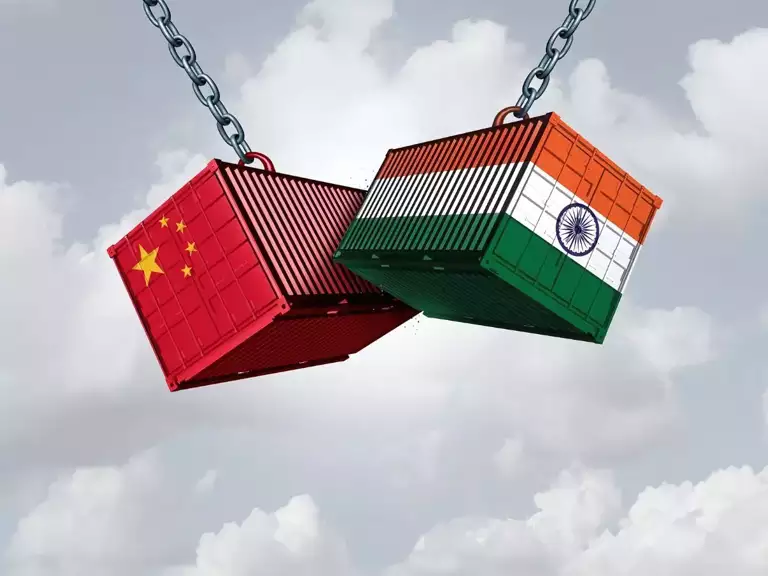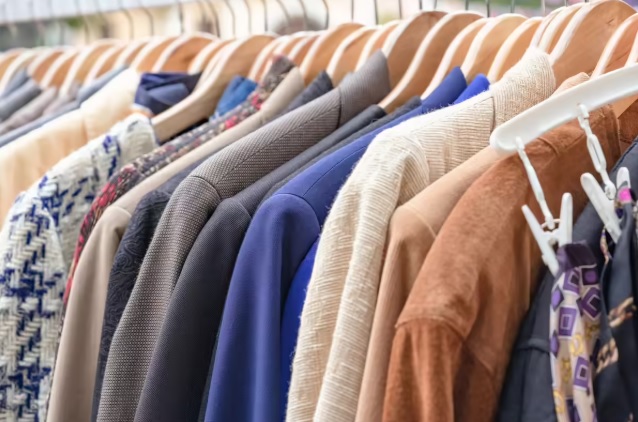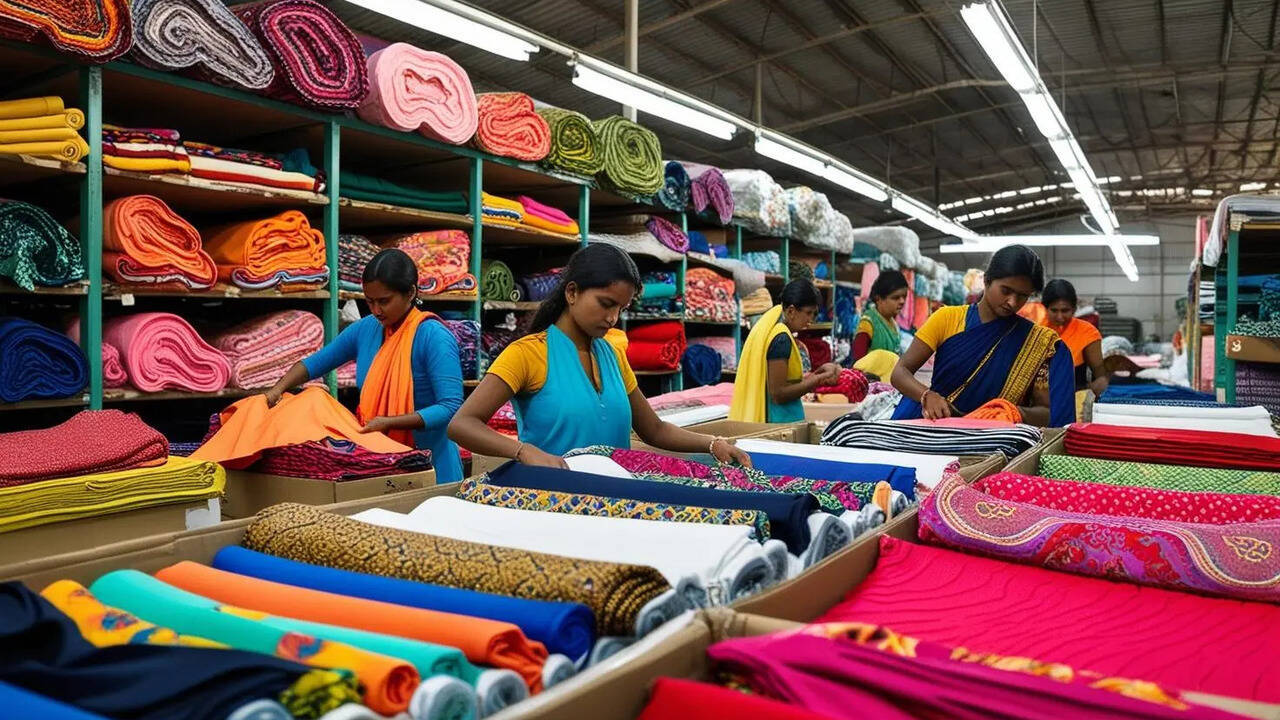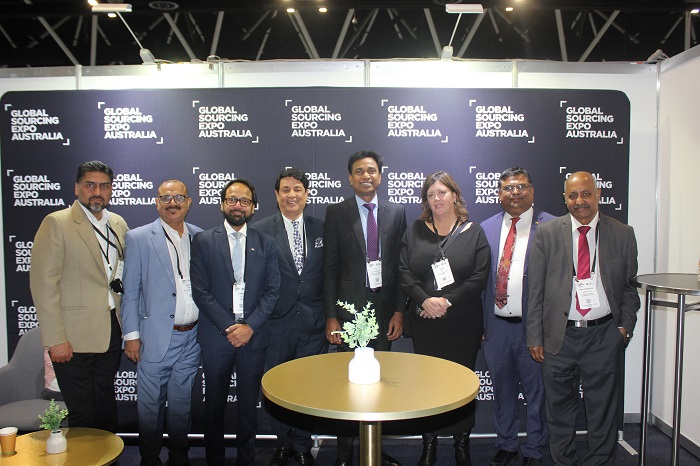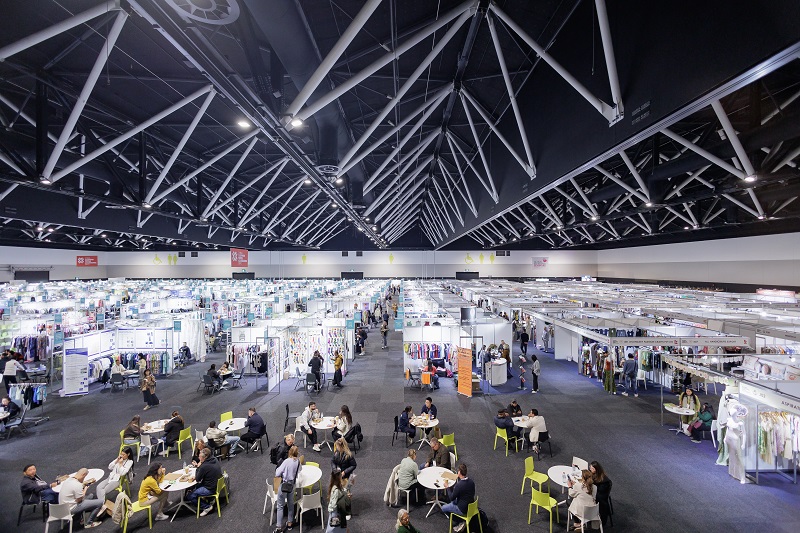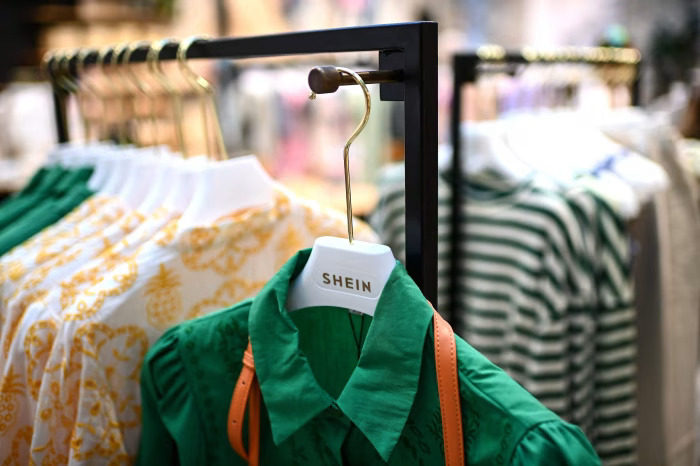FW
The just concluded TEXPO 2016 in Pakistan, organized by TDAP saw delegations from South America, Jordan, Japan, Thailand, Indonesia, Nigeria and India. They met TDAP CE S M Muneer and TDAP Secretary Rabya Javeri Agha. The high profile meetings generated some serious business leads. Led by Aman Chamber of Ccommerce & Textile and ready-made clothes syndicates, the delegation from Jordan shared great enthusiasm for hosting a single country exhibition of Pakistan, which will be organized by the TDAP in Jordan.
Meanwhile, the Thailand delegation discussed the signing of Pak-Thailand Free Trade Agreement and asserted the significance of early signing of the agreement. They showed keen interest in export of cotton yarn. Grande Asset of Thailand expressed interest in products of home textile for hospitality industry.
The Indian delegation exchanged views on great potential for trade between the two countries in the textile sector and also discussed the trade constraints. Two leading trade chambers of Pakistan, the FPCCI and the KCCI, also held conducive business meetings with delegates from Netherlands, S Africa, S America, Spain, Indonesia, Thailand, Jordan, China, Kuwait, India and Nigeria.
The Trans-Pacific Partnership may adversely affect Indian textile and garment exports to the US. Exporters from TPP member countries will get preferential access to the US market while non-members like India will lose out. The US imported about $82 billion worth of apparels in 2015 of which India supplied about $3.7 billion. This accounted for 21.5 per cent of total apparel exports from India, down from 23 per cent in 2014. If the duty turns disadvantageous for India's apparel exports, the share is likely to fall substantially.
TPP has a rule that makes it mandatory for a partner country that makes clothes to source yarn, fabrics and other inputs from another partner country. Only then will the manufacturing country get duty preference. This rule means garment manufacturers in TPP countries have to source their raw materials among themselves even if suppliers from that region are not the most efficient.
So India’s exports of apparel to TPP countries like the US will go down since buyers would like to procure from TPP-based vendors. The Trans-Pacific Partnership is a free trade agreement between 12 countries of the Pacific rim including Australia, Brunei Darussalam, Canada, Chile, Malaysia, Mexico, New Zealand, Peru, Singapore, the United States of America, Japan and Vietnam.
A readymade apparel manufacturing unit has opened in Tripura. This is the second such unit to open in the Northeast. Nagaland already has one. A sum of Rs18 crores has been allotted for a readymade garment manufacturing unit or apparel and garment making center in each of the eight Northeastern states. The aim is to stop people from northeast India going to other parts of the country to seek jobs.
Each apparel unit would provide employment to 1,200 to 1,500 people. Entrepreneurs having a background in textiles can run an apparel garment business on a plug and play model. Each center will be provided 300 machines.
Tripura has enlarged the incentives to boost small and medium industries in the state. Soft loans have been provided to self-help groups at a rate of four per cent. This rate of interest would be further slashed to 3.5 per cent soon.
So far 8,000 self-help groups have become self-reliant and are producing lots of attractive and useful products from benefits provided by the state government. Readymade apparel and various other clothing have a huge market in northeast India, other parts of the country, Myanmar and Bangladesh.
The textile industry of Uzbekistan is known as one of the most dynamic and socially important sectors and ranks high among export-oriented industries of the country’s economy. The Uzbek textile industry is mainly focused on cotton, silk and wool.
Data records that light industry enterprises of Uzbekistan exported products valued at $1.1 billion in 2017. Domestic production was exported to over 50 countries worldwide and the share of goods with high added value went beyond 40 percent.
In early 2017 there were 293 exporting enterprises and by the end of the year their numbers increased to 350. The growth of export indicators was largely due to 64 trading houses which were opened abroad.
A representative from Uztekstilprom’s disclosed,“One of the effective forms of further development of the textile industry will be the creation of clusters. This model implies the organisation of a single production cycle which includes the cultivation of raw cotton, primary processing and its further processing at ginneries with the release of final products.”
Experts have already created a draft Concept of development for the medium-term perspective of cotton-textile clusters given the experience of such facilities in Navoi region.
As many as 34 investment projects on modernisation, technical and technological re-equipment of existing and creation of new enterprises with a total export potential of $151.7 million were realised this year in the light industry, simultaneously their total value exceeded $356 million.
Currently approximately 7,000 enterprises of the industry are operating in the republic. Capacity for production of cotton fibrevalued at 1.4 million tons has been created, of which about 60 percent is used to meet the needs of domestic textile enterprises.
One of the policy priorities of Uzbekistan, the world’s fifth-largest cotton exporter, is further development of its textile industry. Annually, the country grows about 3.5 million tons of raw cotton and produces 1.1 million tons of cotton fibre.
Uzbekistan takes consistent steps to increase the volume of cotton fibre processing. In particular, it is planned to create 112 modern, high-tech industrial factories, expand, modernise and technologically upgrade 20 operating capacities. All this will increase the export potential of the industry up to $2.5 billion a year and create over 25,000 jobs.
In the period 2010-2014, the textile industry of Uzbekistan received and spent foreign investments valued at $785 million while 147 new textile enterprises with participation of investors from Germany, Switzerland, Japan, South Korea, the U.S., Turkey and other countries were commissioned. Export potential of these enterprises were valued at $670 million.
Wool production is at a 70 year low globally, but is still outperforming most other commodities. Retail sales around the world are seeing slower growth rates. The growth in demand is slower than what has been seen in supply, so there is something of an imbalance.
China buys 70 per cent of Australia's wool clip, but there is increased demand in Europe. The rising European interest is acting as a counter to Chinese dominance in the market. Global demand will drive what happens to prices in the next 12 months.
A shift in the global, China-dominated demand for raw wool will push up wool prices everywhere. The number of China's wool processing plants has dropped from 2500 to 2000 in just five years.
Sports wear has traditionally been dominated by synthetic fibers, but natural fibers like wool have superior qualities. Wool keeps a person cool when it's hot and warm when it’s cold. Apart from this wool is anti-microbial and anti-odor.
A conference was held in Australia a few days ago to discuss the latest wool trends, innovations and what the future holds for the industry. There was a large contingent of Chinese delegates as well as buyers and sellers from all over the world, including Argentina, Uruguay, Italy and New Zealand.
Samsung will offer textile businesses in South Korea its smart factory expertise and help them adopt smart management systems. This is expected to help more than 1,000 small and medium enterprises establish computerized factory management solutions.
The latest move is meaningful, because the smart-factory project has been so far limited to industries such as automobiles, metals and electronic components businesses.
More than 80 per cent of the textile business operators in the country have fewer than 10 employees, due to falling demand. Some companies are reluctant to adopt ERP solutions due to financial issues.
Under the partnership, the electronics giant will share its technical expertise in areas such as efficient factory management. The Samsung ERP solutions include all the corporate management processes ― inventory management, accounting, sales and finance management.
Korea has been opening up so-called creative economy centers throughout the country sponsored by conglomerates, aimed at bolstering the development of ventures through merging various industries with information and communications technology.
Some 17 conglomerate-funded innovation centers have been built across the nation.
The country’s textile industry has for decades suffered due to the slowdown, failing to renovate manufacturing facilities and adopt smart management systems.
www.samsung.com/in/home/
Dubai’s retail sector has been growing between 3.5 per cent and 7.5 per cent since 2010. Consumer spending is expected to support retailing activity to expand by 7.7 per cent in 2016, with growth thereafter at a CAGR of 8.1 per cent until 2020.
Store-based retailing is behind 98 per cent of the total value of retailing in 2015, and its pace of growth has by a large margin outpaced the growth of the non-store retailing category since 2010.
Growing economic prosperity, a steady population growth, and rising incomes have all helped to increase consumers’ overall expenditure in Dubai. In addition, the boom in tourist numbers has kept the wholesale and retail sector vibrant.
Dubai’s trendy, youthful population is a major factor for this growth. This segment of the population keeps up to date with the latest trends in many retail product categories such as apparel, footwear, health and beauty products as well as luxury products. This has encouraged retailers to introduce new merchandise and expand their physical presence in recent years, leading to higher value growth.
Apparel and footwear retail outlets are set to lead growth in the medium run at a forecast CAGR of 6.6 per cent, which will keep it as the largest sub-segment under the non-grocery retailing category.
The OEKO-TEX Association has officially launched the new ECO PASSPORT by OEKO-TEX certification for sustainable textile chemicals. It is a two-step verification procedure by which manufacturers of textile processing chemicals and chemical compounds are able to confirm that their products meet the criteria for environmentally responsible textile production. The six month pilot phase with manufacturers has been successfully completed. The results have been positive and the first certified textile chemical producers has already accessed the key benefits of the new ECO PASSPORT concept.
ECO PASSPORT by OEKO-TEX offers textile chemical manufacturers a confidential and independent method to reassure their customers that chemicals, colorants, and auxiliaries are in line with the industry ’sustainability requirements and initiatives. ECO PASSPORT by OEKO-TEX certifies chemicals protect consumers, textile industry workers, and the environment from the potential dangers of harmful substances.
Based on customer and market feedback during the six month pilot test phase, OEKO-TEX modified the original ECO PASSPORT concept to improve functionality. The workflow between applicants, testing institutes, and the OEKO-TEX Secretariat was refined and the certification and lab testing procedures were optimized.
Textile chemicals, colorants, and auxiliaries are analyzed in a two-step process that confirms that the compounds and each ingredient meet specific criteria for sustainability, safety, and regulatory compliance. In the initial analysis, chemical compounds are checked against a comprehensive manufacturing restricted substance List (MRSL) that incorporates the OEKO-TEX Standard 100 RSL and the STeP by OEKO
TEX® MRSL both of which are compliant with REACH and ZDHC guidelines. Next, the textile chemicals, colorants, and auxiliaries are analyzed within a well-reasoned laboratory testing framework to ensure that they do not contain any unsafe contaminants. Compounds that pass these two phases are granted the ECO PASSPORT by OEKO-
At a recent global textlile trade show, Lenzing and The Woolmark Company signed a Cooperation Agreement and presented the partnership between the lyocell fiber TENCEL and Merino wool. The perfect fiber duo introduces a new dimension to high-end textiles and active wear.
Merino wool has been renowned as a fiber material for a long time and has always been used as a raw material in clothing and in home textiles. In the high-end segment, Merino wool is a highly desirable fiber. The end result can be extremely fine and glossy. TENCEL is ideal as a blending partner for Merino wool. The properties of moisture management and a smooth fiber surface are enriching factors when combined with Merino wool.
International brands have been successfully using the fiber duo in their collections. The blend is particularly popular among customers in Europe and the US. In internal retail analysis, it is striking that the TENCEL/Merino wool blend is often used in knitwear.
The blend is used predominantly in the active wear segment, according to Robert van de Kerkhof, CCO Lenzing. “Our activities will focus on woven fabrics with high-quality fabrics for formal suits, clothes and shirts. We are operating with wool blends in a high-end, segment with high margins and are interested in expanding this business,” he explains.
The best of two worlds TENCEL is of botanic origin. Merino wool is a protein fiber. The fibers unite the best of two worlds. TENCEL stands for a silky smooth drape and the blend with Merino wool demonstrates that the luxurious flow of the fabrics can create new and fashionable silhouettes
Thermal regulation is, however, one of the most interesting features of the blend. Both fibers absorb moisture vapour very well and create a pleasant micro climate on the skin. “It is also interesting that Merino wool becomes even more usable for summer with TENCEL and TENCEL becomes more suitable for winter as a result of blending with Merino wool,” Robert van de Kerkhof comments. “This means that the blend can be used whatever the season is.”
Business targets of the cooperation
The long term goal is to expand the high-end Merino wool market with TENCEL/Merino wool blends by 2020 and firmly establish this elegant blend in global collections. The product developments will be backed up with In-house developments and co-operation with external trend experts, especially for shirting are being intensified to inspire fabric manufacturers in Asia. Globally, the focus is on flat knits and circular knits for women’s outerwear, and for men’s and children outerwear.
India’s 2016-17 cotton production is forecast at 28.5 million bales. Yields are expected higher through a combination of better crop, pest, and weed management practices and a probable normal monsoon after two consecutive years of deficient rain.
Mill consumption is forecast lower than the 2015-16 marketing year as demand remains weak.
Planting decisions are largely driven by expected price realization, but additional factors such as the relative cost of production of competing crops, water availability, anticipated minimum support prices and a timely monsoon are crucial factors.
Farmers consistently exhibit strong preference for cotton relative to other crops. But India’s cotton yields remain significantly lower than the global average of 800 kg per hectare, a difference attributed largely to the relatively low plant populations that farmers seed in order to create rows that are wide enough for bullocks and workers to traverse. The area may decrease over the long-term as rising food demand and efforts to encourage food crop production prompt farmers to shift to other crops.
The advent of biotech cotton has improved the predictability and stability of cotton as a crop which has supported the expansion of cotton area in recent years. Arrivals may be lagging compared to previous years but larger supplies are being held in the supply chain among various stakeholders.



